This Jewel-Box Museum Explores the Fascinating World of Natural Fragrance
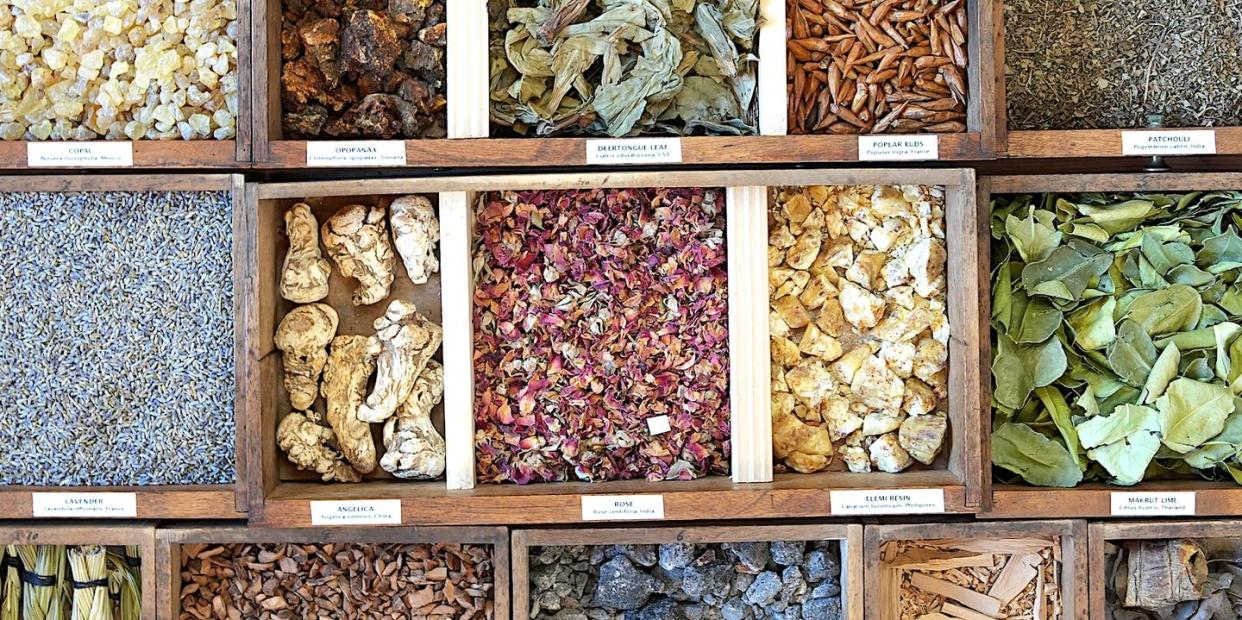
- Oops!Something went wrong.Please try again later.
Down a small, hedge-lined alley in Berkeley, California lies a veritable treasure trove, but one perhaps unlike anything elsewhere in the world. Here, scores of vintage bottles, peculiar taxidermy, piles of crumbling old books, and other mystifying curiosities from all corners of the globe are waiting to be discovered
This is not a sorcerer’s workshop. It's the Aftel Archive of Curious Scents, a jewel-box museum dedicated to the artifacts and aromatic materials of the natural world, that was founded by the award-winning perfumer and author Mandy Aftel in 2017. Through her work with natural fragrances, Aftel is on a mission to reconnect society with scent.
“Scent is what brings us together in the world,” she says. “Every civilization, every culture has been interested in and used it—for worship, for rituals, for sexuality, among other things. But it’s as if we’ve really moved away from these botanical materials that give so much to our lives.”
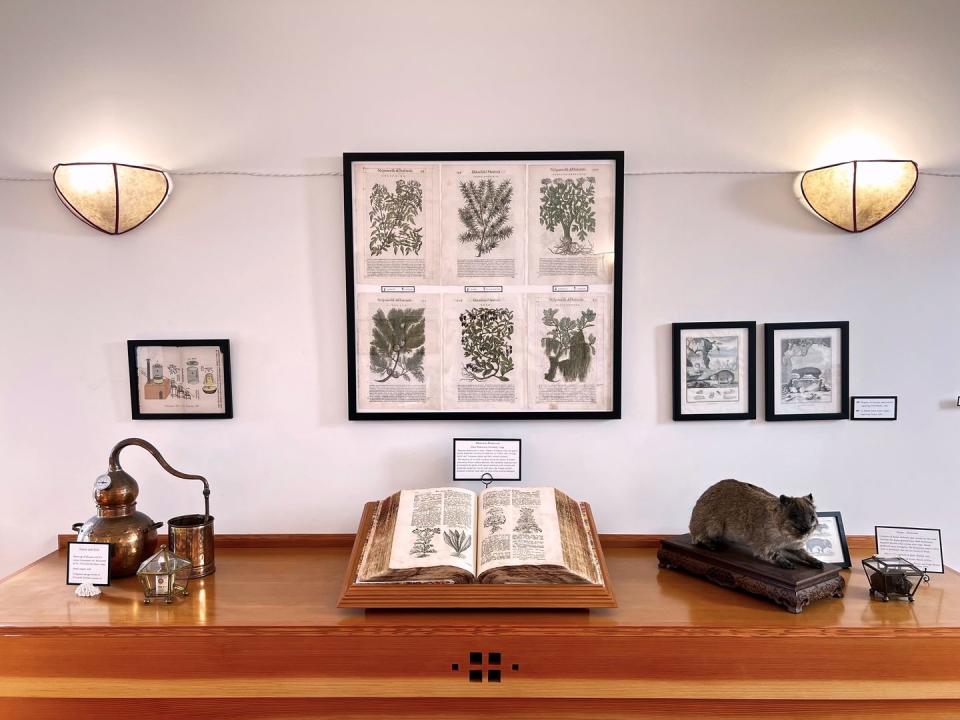
In founding the museum, Aftel knew that one way to reunite the world with scent is through the beautiful and captivating objects that tell its story. Indeed the most fascinating elements of the museum are the curious, scent-themed objects themselves that Aftel has been assembling for decades. An inveterate hunter-gatherer, Aftel’s initial fascination with fragrance and natural materials was in part sparked by an early passion for books on perfumery from the turn of the century.
“I knew that the contemporary world of perfume was synthetic, but had once been natural,” Aftel says. “Once I got my first book from the 1800s, I was under its spell.”
With hundreds of rare and antique books on the history of scent in hand, Aftel started going on buying trips to Europe where she’d search for things at antique fairs like one-hundred-year-old essential oils and hand-tinted postcards of people gathering botanical materials.
“I slowly inched my way forward, buying things one, two at a time,” Aftel says. “I was just in love with this creative, eccentric, and beautiful world of scent and, eventually, I started wanting to share what I found.”
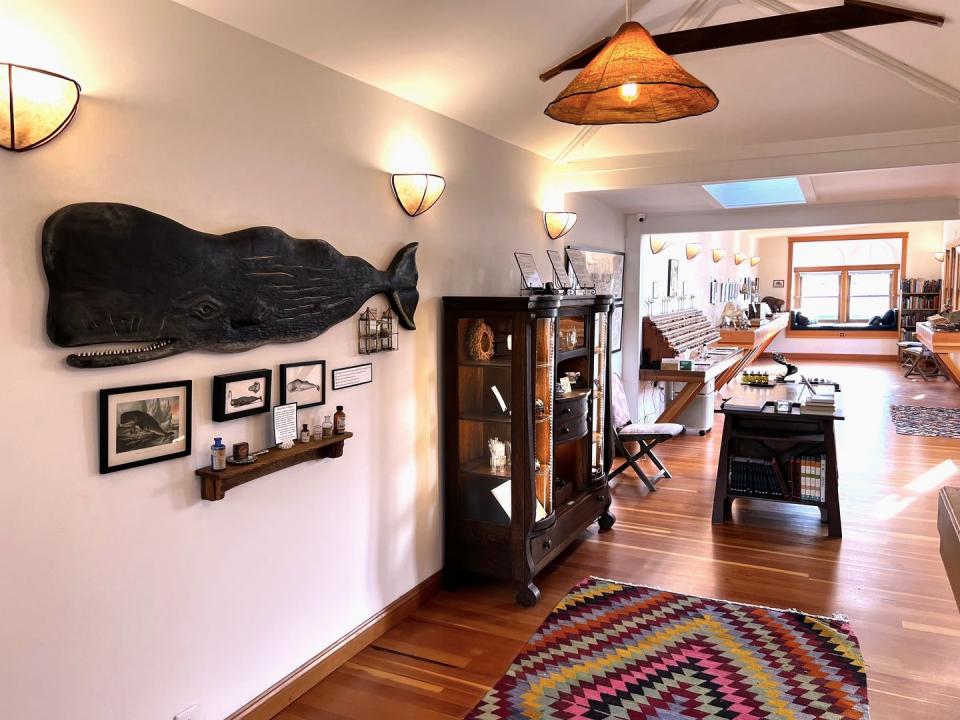
Her ever-growing collection that makes up the museum today includes an extraordinary array of artifacts, and there’s always a surprise or two in store. Positioned throughout the cottage along Douglas fir counters and in vintage cabinets, you'll find everything from intricately-illustrated books from the 17th century and bizarre-looking antique distilling apparatuses to charming groupings of 1920s steel perfume label stamps. There’s even a fantastical menagerie on display to explain the rather strange yet fascinating world of animal essences—an antique taxidermy civet, a papier-mâché beaver, enchanting engravings of hyraxes, and, most notably, a six-foot long hand-carved wooden whale said to be the source of legendary ambergris—that Aftel had made based on an antique print.
In drawers and on tables, there are also dozens of raw botanical materials to explore, touch, and smell, like Labdanum, the sticky resin of the Cistus plant with a leathery, musky smell, and Bushman’s Candle, fallen bark collected by a tribe in Namibia with notes of amber, vanilla, and incense.
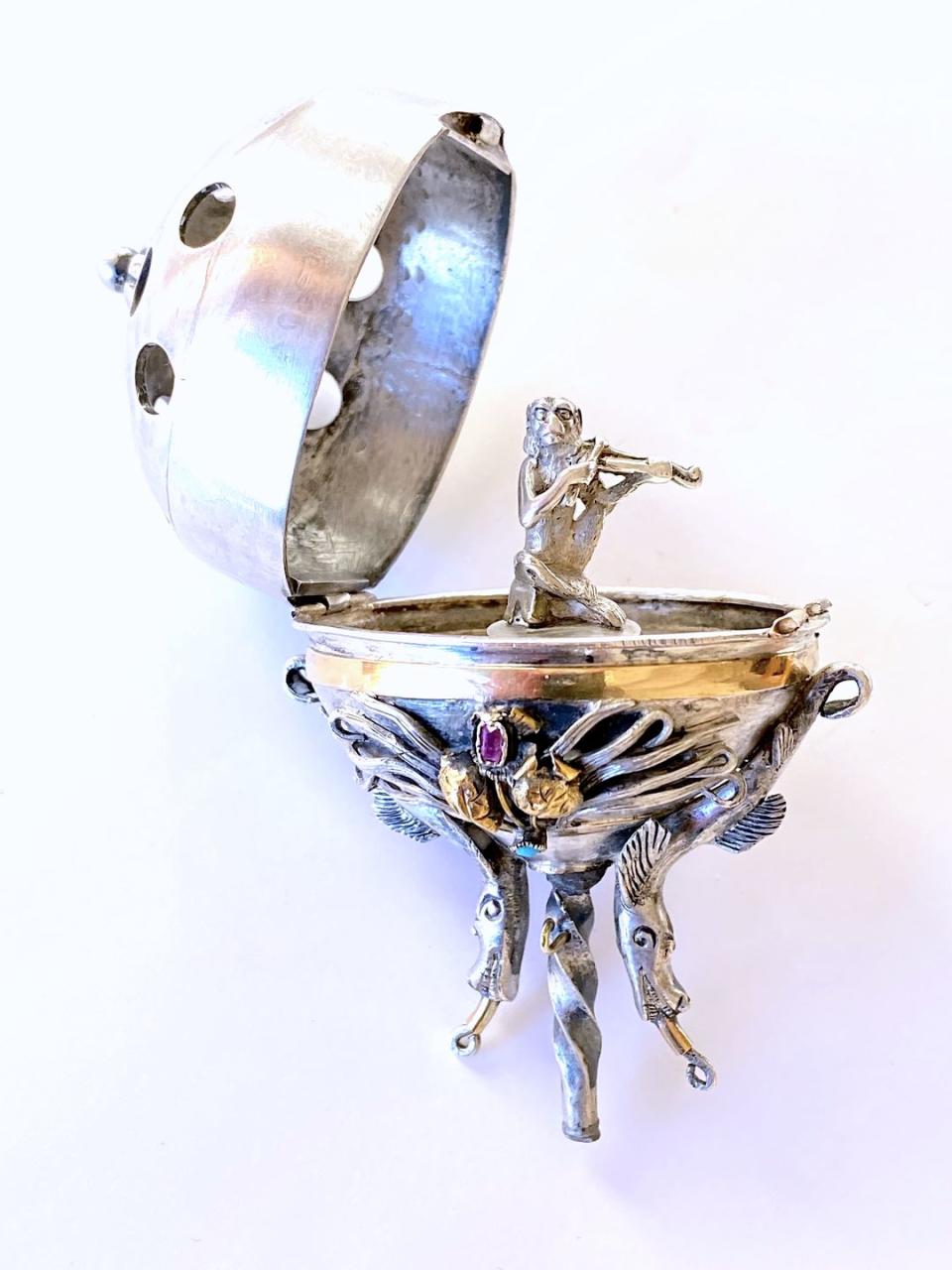
One of the more intriguing—and perhaps eerily prescient—pieces to behold at the museum is an egg-shaped pomander made of sterling silver and accented with rubies, turquoise, and solid gold that dates to the 1790s. When filled with scented material, it would have been worn around the waist to ward off illness and bad odors associated with the plague.
Elsewhere on view, there’s a mesmerizing collection of oud, the most expensive botanical material in the world, that comes from the rare, rotting parts of the agarwood tree native to Southeast Asia. Highly valued for its complex, rich and earthy fragrance, this aromatic resin has been used as incense and perfume since ancient times. At the museum, visitors can witness one of the best collections of oud outside of Japan, including a wooden specimen box containing handfuls of the magical, organically-shaped, and beautifully-textured material that was left to Aftel by a former student.
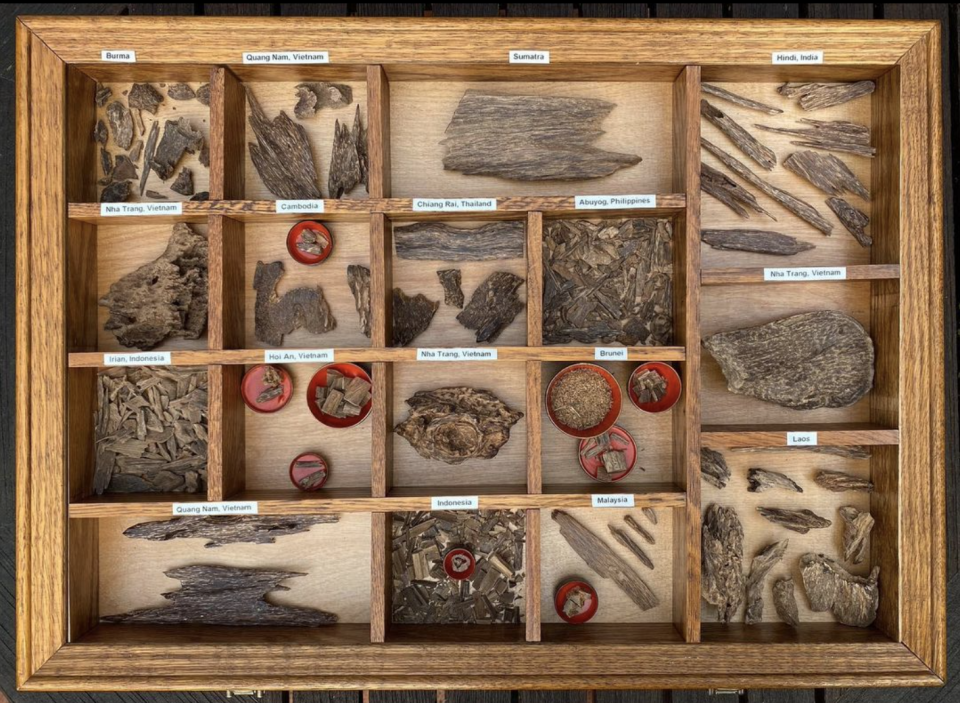
But the curiosities don’t stop there. A focal point of the museum is the impressive, custom-made perfumer’s organ, possibly the ultimate cabinet of curiosities for the scent-obsessed. Carefully arranged on wooden shelves like an old-world apothecary lies 230 bottles of oils—everything from the familiar like peppermint, bergamot, and myrrh, to the unusual like blood cedarwood and orris butter—that become the foundation of the visitor’s journey into the alluring world of natural materials. The best part? Visitors get to select and take home five scent strips to continue their perfume exploration.
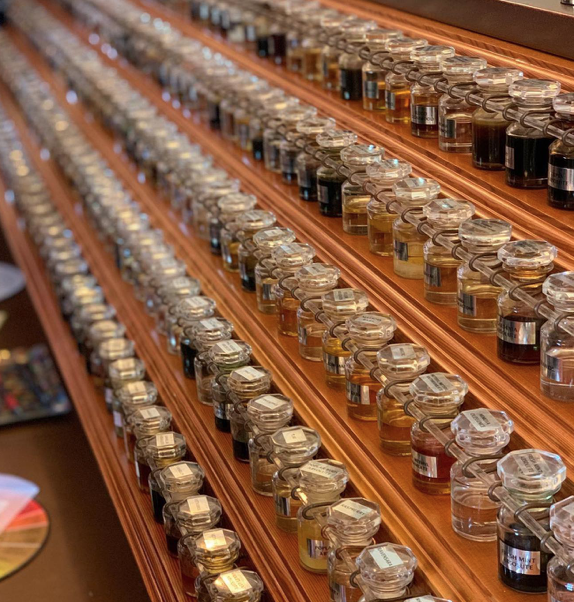
In the glorious back garden, where Aftel has cultivated over one hundred old roses, fuchsias, and lavender, the journey concludes with over forty interesting materials to smell. One of the exhibits here is dedicated to the aroma molecules of a rose. “You see the rose, you touch the rose, you smell the rose. It’s all about the natural world that today’s synthetic world of perfume has nothing to do with anymore.”
And Aftel knows that in order to begin to understand the world of natural fragrance, you have to engage with it. To aid in the scent experience, she has even created the ‘Aromacone’—a handy, scent-catching device made of paper that, as she explains, is like a zoom lens for your nose.
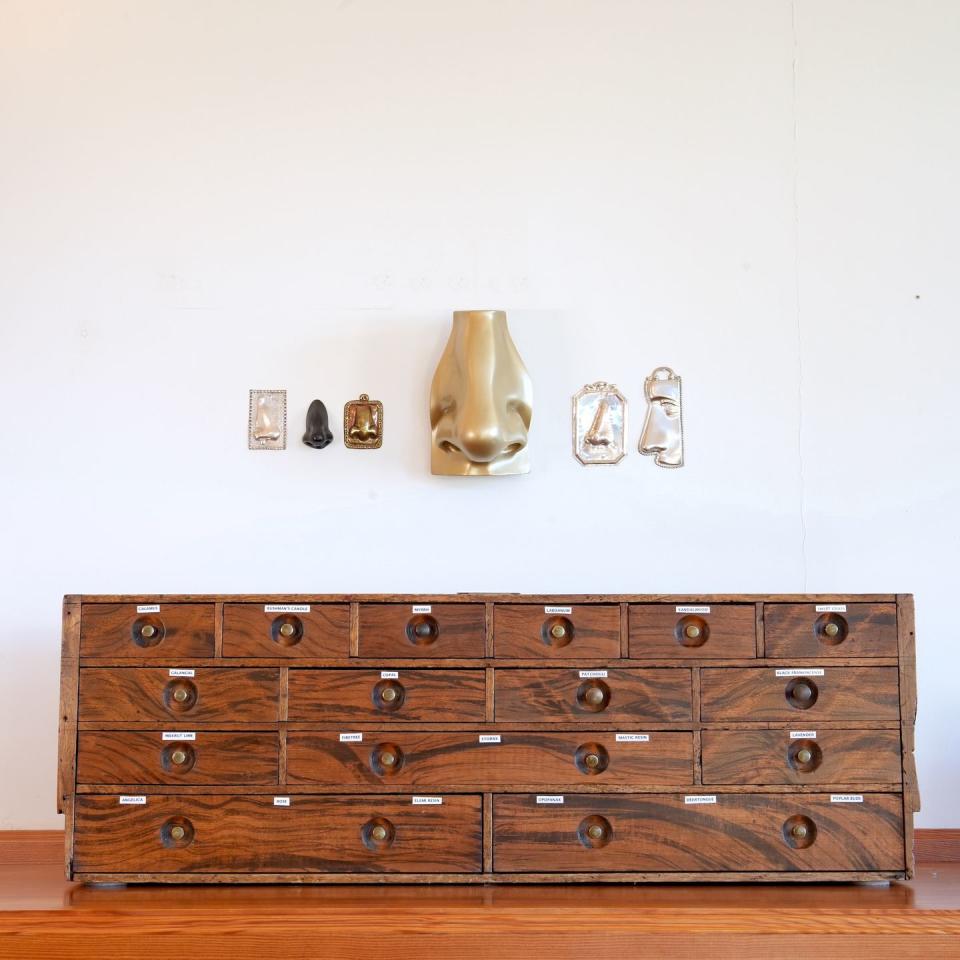
Ultimately, Aftel is a magician of sorts. Through a combination of intoxicating scents, natural materials, and objects of history and beauty, she has conjured up an experience that not only enriches all the senses but also, captures one’s imagination. She admits that she was shocked at first to find so many kindred spirits or people who, upon visiting the museum, were so equally captivated by her curious collections.
“People have had the urge to collect forever, to collect what they find beautiful,” she says. “Beautiful materials and beautiful things will always speak to us.”
The Aftel Archive of Curious Scents in Berkeley, California is open on Saturdays from 10a.m. to 6p.m. For more information, visit aftelarchive.com.
You Might Also Like

